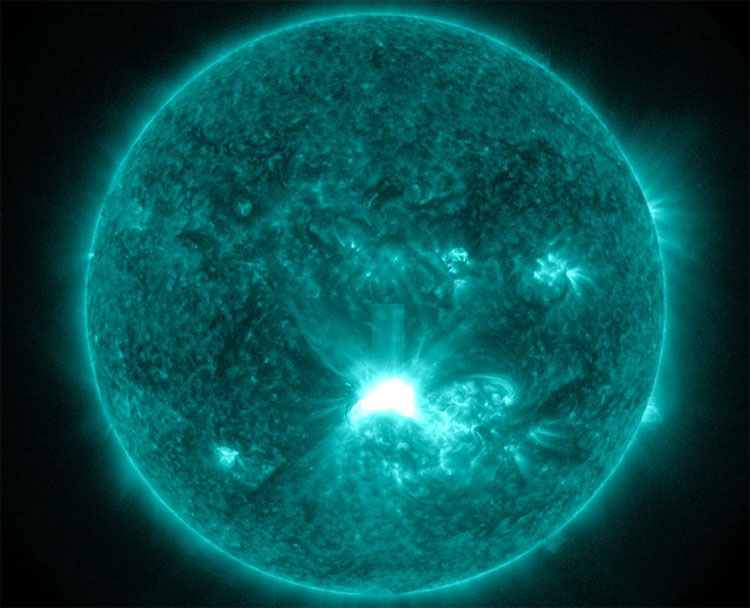Auf der Sonne hat sich am Abend des 12. Juli 2012 eine große Sonneneruption ereignet. Die ausgeworfenen heißen Gase werden zwischen 21 Uhr und 23 Uhr bei der Erde eintreffen und könnten sogar in unseren Breiten Polarlichter auslösen.

Continuing its increasingly active trend, the sun erupted with another X-class solar flare on Thursday. Only last week, another active region (AR1515) delivered an impressive parting shot -- an X1.1 flare -- as it rotated toward the solar limb. Today's more energetic X1.4 flare, however, was directed right at us.
Today's fireworks were courtesy of another magnetically dominated active region called AR1520 that has been ominously crackling with flare activity. The active region has produced an impressive and beautiful grouping of sunspots (bottom).

There's currently no word about the impact this event on the Earth's ionosphere, although sudden ionospheric disturbances (SIDs) are highly likely, stemming from strong X-ray radiation, potentially interrupting radio communications. A coronal mass ejection (CME) -- an expanding "bubble" of solar plasma and magnetism -- has been generated and it is expected to hit Earth on July 14, according to Spaceweather.com. There's a strong possibility that the CME may produce a geomagnetic storm, culminating in auroral activity at high latitudes.
ANALYSIS: X-Rated: Sun Erupts With a Powerful Solar Flare
The uptick in solar activity is all part of the natural 11-year cycle of the sun, which is expected to reach its peak by 2013.
Today's event is yet another reminder that we live in the realm of a highly dynamic star and with the help of solar observatories like NASA's Solar Dynamics Observatory (SDO), we can look deep into the solar corona where these impressive explosions are generated.

Images: Top: The view through the SDO's AIA 131A filter, sensitive to superheated plasma of several million degrees Kelvin (Celsius) high in the sun's corona, minutes after the flare erupted. Middle: Sunspot activity in the sun's photosphere around AR1520 -- using the SDO's HMI instrument. Bottom: The lower corona as seen by the SDO's 171A filter, sensitive to plasma that is approximately a million degrees. Credit: SDO/AIA/HMI/NASA

NASA intensified the severity of its space weather predictions, and this story was updated to reflect them on July 12, 2012 at 7:15 p.m. EDT.
7180 Views
